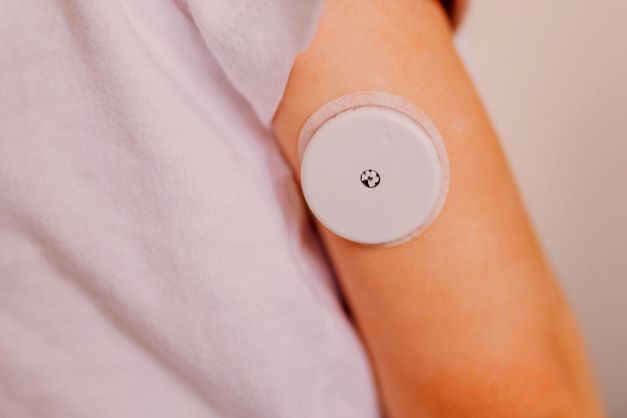The intersection of wearables and sensors in medtech is an exciting one. We’ve already seen the use of wearables as a way to track our physical activity, but there’s more to it than that.
The way we think about exercise has changed over time. It used to be about sweating and running; now it’s about using the right tools to stay healthy, even if you’re not working out.
When it comes to health and fitness, wearables are helping us find new ways to measure progress and keep ourselves accountable through data. But when it comes to medical devices, they provide something else entirely: the opportunity for patients to take an active role in their own care by providing them with real-time information about their bodies and conditions—and ultimately leading them toward better outcomes.
Wearables and sensors are the future of medicine
The intersection of wearables and sensors in medtech is a rapidly growing field. We believe that wearable tech will be a game-changer for patients, doctors, hospitals, and insurance companies alike.
Let’s take a look at what these two technologies can do together:
- Wearables give us insight into how we’re feeling physically, mentally, and emotionally—and this data can help us to make better choices about our health.
- Sensors can continuously monitor vital signs like blood pressure or glucose levels while you’re sleeping or exercising—giving doctors real-time information that they can use to make better decisions about treatment options.
- Wearable tech has the potential to enable patients to receive more personalized care—and perhaps even reduce costs associated with hospital visits by allowing patients to stay home longer without risk of infection during recovery periods (which means fewer infections).
The wearable medical device market is expected to grow at a CAGR of 15.2% between 2017 and 2022, according to Grand View Research. This will result in the market for wearables reaching $36.9 billion by 2022, with the growth being driven by an increased adoption rate among consumers and healthcare professionals.
As this industry grows and becomes more popular, there’s one thing that needs to happen: sensors must become more prevalent. That’s what we’re here to discuss today—the intersection of wearables & sensors in medtech!
What are Sensors?
Sensors are devices that measure physical properties or chemical changes within their surrounding environment, such as temperature or pressure. They can also be used to detect electromagnetic radiation, such as light or sound waves. The most common types of sensors include accelerometers (which measure acceleration), pressure gauges (which measure force), flow meters (which measure fluid flow), and gyroscopes (which measure angular velocity).
Wearables and sensors are a natural fit for the medical technology industry, as they can be used to track the health of patients and even predict medical issues before they occur.
The most common wearable device used in medicine is a fitness tracker, which helps doctors and nurses keep track of their patients’ movement, heart rate, blood pressure, and more. The data gathered from these devices can help doctors better understand their patients’ health and how they respond to treatment.
Another popular wearable device is the smartwatch, which allows people to track their activity levels and heart rate without having to wear an uncomfortable chest strap. This type of technology has been shown to improve patient compliance with doctor’s orders and increase overall health outcomes by helping people make changes that are best suited for them.
Sensors are also used in many areas of medicine today—from monitoring patients’ vital signs during surgery or delivering drugs via inhalation therapies, through remote monitoring devices like those used in home healthcare settings or hospital rooms where there’s no physician present 24 hours a day/7 days per week (or around-the-clock).
Wearables and sensors are a hot topic in the medical device industry
The idea is that wearables can help people monitor their health, improve their quality of life, and reduce healthcare costs.
But what is the real value proposition of wearables? Are they just a fad? Or is there more to this market than meets the eye?
Research has shown that patients are more likely to comply with prescribed treatments if they have access to data on their health status. This data can be accessed through wearable devices or sensors that collect physiological data from the patient’s body and then transmit it wirelessly to a mobile device or computer.
For example, if you suffer from diabetes, your doctor might prescribe daily blood sugar tests. If you had a smart watch or bracelet that measured blood sugar levels continuously, then you could use it as a remote control for your insulin pump—and make sure your levels didn’t get too high or too low at any point during the day (or night).
In addition to providing information about vital signs like heart rate and respiration rate, some smart wearable devices also offer feedback related to diet, exercise levels and other factors important for maintaining good health as well as detecting potential problems earlier than traditional methods would allow
Wearables and sensors are the future of medtech
The medical industry is moving toward a more holistic, preventative approach to care, and wearables and sensors are key to that vision. As our understanding of how human bodies work continues to evolve, we’re learning that our bodies don’t operate in isolation—they interact with each other constantly.
We’ve already seen this concept applied to wearable devices like Fitbits and Apple Watches, which measure heart rate, steps taken per day, and other health-related metrics as part of a larger wellness movement. But now we’re seeing medical devices like thermometers, blood pressure cuffs, and glucose monitors integrate with these same kinds of devices to give doctors a more complete picture of their patients’ overall health status.
This kind of data can be used by doctors to make better decisions about when it’s time for surgery or if a patient should take medication at all. It also makes it easier for patients themselves to track their own progress through recovery from an illness or injury—something that will continue to become more important as medical technology advances further toward prevention instead of just treatment.
Wearables and sensors are a hot topic in the medical technology industry. Their combined ability to measure, collect, and analyze data has enabled a number of new technologies that can improve patient care and quality of life.
However, wearables and sensors are not just for medical devices—they’re also being used in other areas such as agriculture and manufacturing. What’s more, their use is growing rapidly. The market for wearables alone is expected to reach $23 billion by 2023.
Sensors in MedTech: What You Need to Know
Sensors are a critical part of medical technology. They allow doctors to monitor their patients’ vitals and detect any abnormalities that might occur. They also allow doctors to keep track of how a patient is responding to treatment, or if they’re responding at all.
But how do sensors work? And what are some of the different types of sensors? Here’s a quick primer on the basics of sensors in medtech:
What Do Sensors Do?
Sensors have many uses in medtech. They can be used to detect heart rate, blood pressure, body temperature, respiration rate, and more. These measurements are then transmitted through wireless technology so they can be read by doctors remotely. This way they’ll have better insight into what’s going on with their patients without having to physically check them every few hours (or even minutes!).
Sensors in MedTech
Sensors are used in many different types of applications, from medical devices to the internet of things. They can be used to measure various parameters such as temperature, pressure, force and even light intensity.
The sensors are available in various forms like resistive, piezoresistive and capacitive. The most common types of sensors include accelerometer, gyroscope, GPS module and global positioning system (GPS).
In this article we will discuss about the use of sensors in medtech.
Sensors are a big deal in medtech, and they have been for a while. In fact, sensors have been used in medical equipment for decades. But the way we think about them has changed pretty dramatically over that time.
The first thing you need to know about sensors is that their purpose is to measure things—specifically, physical properties of a person or environment. They can measure temperature, pressure, light levels, sound waves and more.
In the past, sensors were used primarily for monitoring patients and diagnosing illnesses. For example, a thermometer would be used to take your temperature or a blood pressure cuff would be used to check your blood pressure. These days though, we’re seeing more and more uses for these devices outside of traditional medical settings.
For example: some hospitals are using sensors as part of their security system (to monitor movement through doorways or halls). And some companies are using them in manufacturing plants to monitor production processes without having an employee watch over everything manually all day long (which is not only time-consuming but also dangerous).
I wrote this post inspiring myself on the interview I made to J. Cris Salinas on my YouTube Channel. He is the Global Head, MedTech Advisory & Innovation at Salesforce.
In this episode, we talked about The Intersection of Wearables & Sensors and Their Role in the MedTech Industry. Here are the questions we’ve addressed:
- How are Wearables & Sensors playing a bigger role in the next normal for the MedTech industry?
- Have you seen partnerships created between the MedTech Industry and Payor / Insurance Companies?
- What do you think will happen next in the MedTech Industry?
Connect with J. Cris Salinas on LinkedIn and Twitter
Feel free to connect with me on LinkedIn and Twitter
Check our Channel Partners:
Series Partner: FUJIFILM #Healthcare
Industry Partner: Isaac Care
Thanks a lot for reading this post. If you liked this post, maybe you’ll enjoy other posts on my blog. I really hope that you’ll visit my channel on YouTube, or that you’ll subscribe to my channel. It would be the best way if you want to know my future project.
Please, share this episode with your networks





